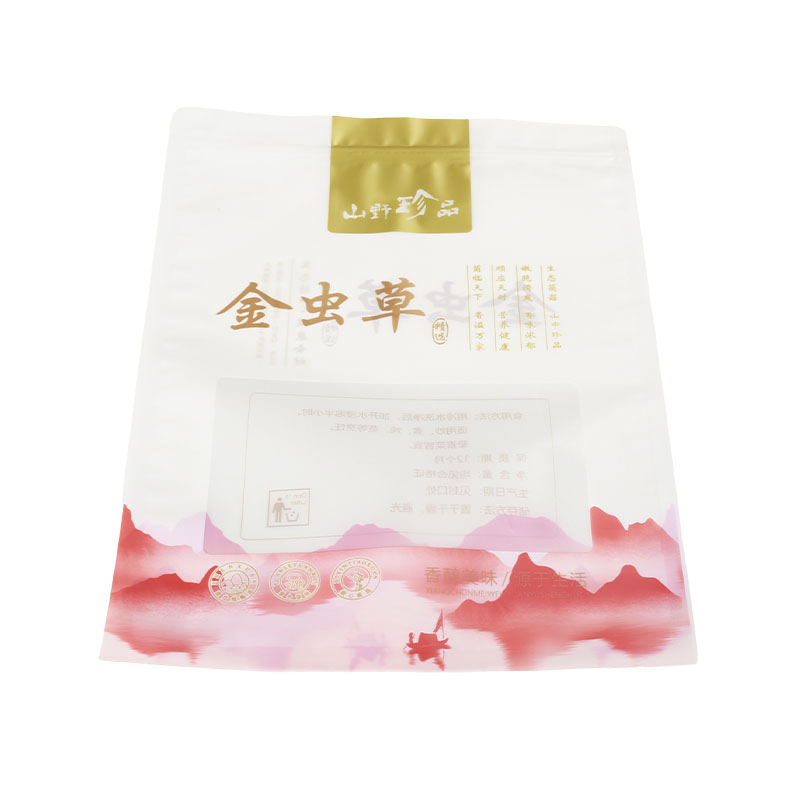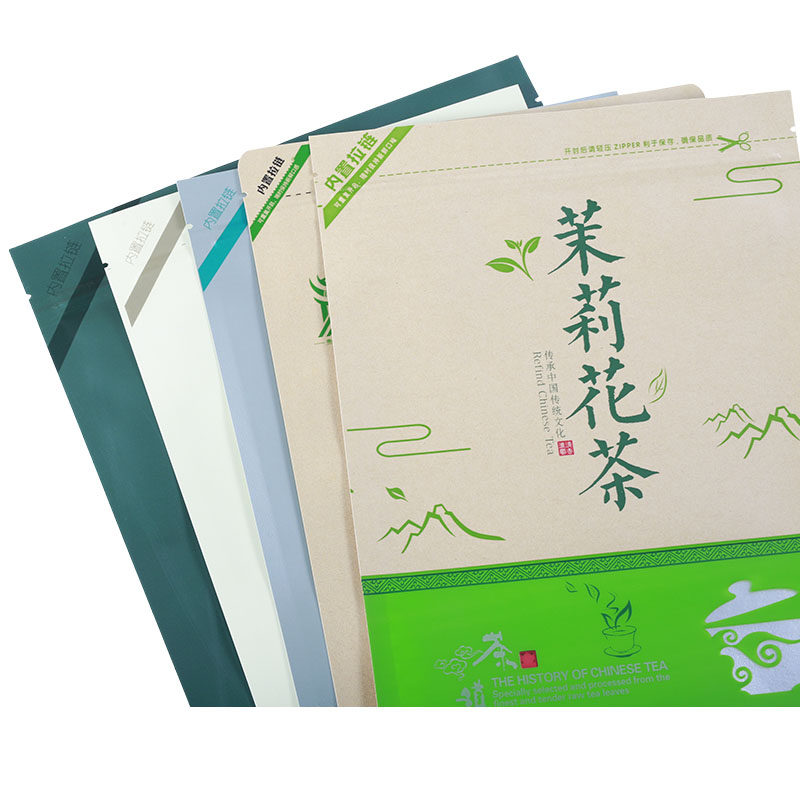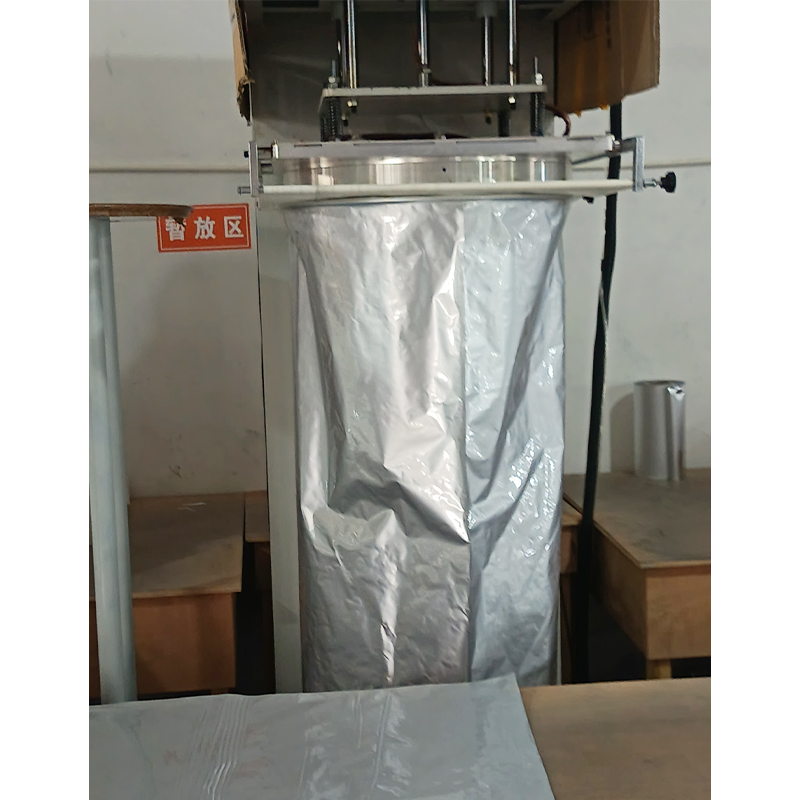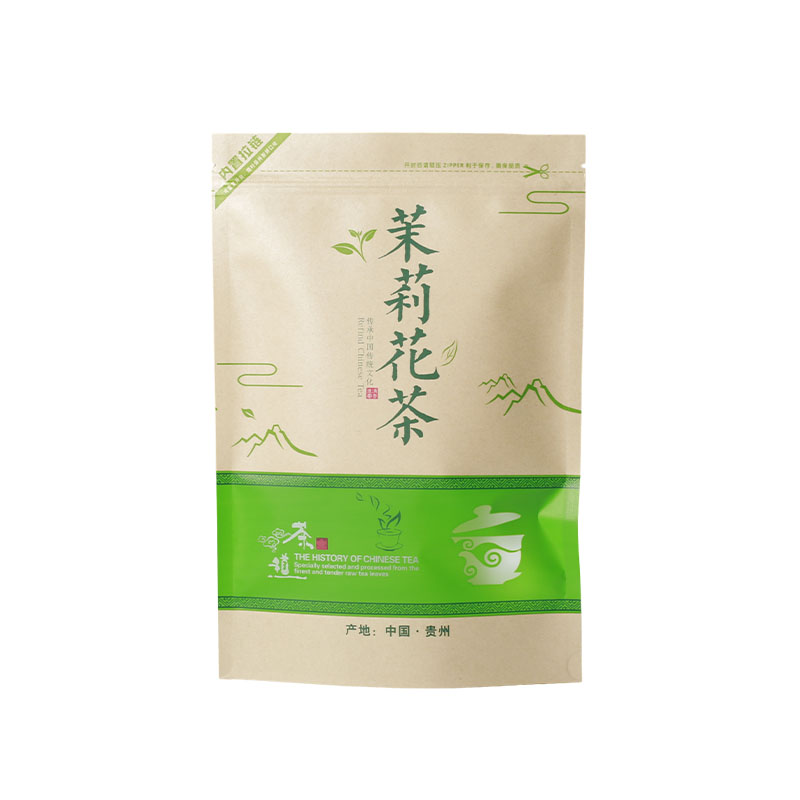How does the aluminum foil bag's multi-layer composite structure synergistically achieve effective protection against oxygen, water vapor, and light?
Release Time : 2025-07-31
In the evolution of modern packaging technology, the aluminum foil bag has long surpassed the simple function of traditional plastic bags, becoming a sophisticated vehicle that connects material science, preservation technology, and sustainable concepts. It's more than just a protective covering for food, medicine, electronic components, or industrial chemicals; it acts as a barrier against external aggression and preserves the inherent value. Its core lies in the wisdom of its multi-layer composite structure—combining the barrier properties of aluminum foil with the toughness and heat-sealing properties of plastic to create a near-perfect microenvironment, safeguarding the quality, safety, and freshness of the contents.
The core value of the aluminum foil bag lies in its ultimate construction of "multiple barriers." While a single layer of material often struggles to meet all performance requirements, the aluminum foil bag, through co-extrusion or dry lamination, combines layers of different functional films—polyester (PET), aluminum foil (Al), and polyethylene (PE)—to create a synergistic effect. The aluminum foil layer is the heart of the bag—it offers near-absolute barrier properties against oxygen, water vapor, light, and odors, effectively preventing food from oxidizing and spoiling, pharmaceuticals from becoming ineffective due to moisture, electronic components from corroding, and the loss of aromatic flavors. The outer PET layer provides mechanical strength and scratch resistance, protecting the aluminum layer from damage. The inner PE layer offers excellent heat-sealing properties, ensuring a secure and reliable seal. This multi-layer structure is not only lightweight and flexible, making it easy to fold, transport, and store, but also allows the thickness and combination of each layer to be adjusted according to specific applications, achieving an optimal balance between performance and cost.
The innovation of aluminum foil bags lies not only in the material composition but also in their in-depth exploration of functional extension and application scenarios. Traditional aluminum foil bags were primarily used for static protection, but modern high-end products incorporate more intelligent and environmentally friendly features. For example, some aluminum foil bags feature an antimicrobial coating on the inner layer to inhibit microbial growth and extend the shelf life of fresh food. Others incorporate humidity indicators or time-temperature labels to provide real-time information on the storage status of the contents, enhancing supply chain transparency and security. In the field of electronic anti-static protection, aluminum foil bags, by embedding a conductive layer within their structure, effectively shield electromagnetic interference (EMI) and prevent electrostatic discharge (ESD), becoming a protective shield for the transportation and storage of precision electronic components. Furthermore, customized features such as zipper closures, air valves, easy-tear notches, and printed windows are available to meet the needs of different industries, significantly enhancing user experience and operational convenience.
In terms of both user experience and social value, aluminum foil bags demonstrate a dual contribution to "freshness preservation" and "resource conservation." In the food industry, they significantly extend the shelf life of perishable products such as baked goods, nuts, coffee, and frozen goods, reducing food waste caused by spoilage. In the pharmaceutical cold chain, their excellent thermal insulation and barrier properties, when used in conjunction with ice packs, maintain a stable low-temperature environment during the transport of pharmaceuticals, ensuring the safety of sensitive items such as vaccines and biologics. For consumers, the aluminum foil bag's airtight seal means it can be reclosed after opening, preserving the quality of the contents and reducing single-use consumption. Its lightweight nature also reduces energy consumption and carbon emissions during logistics.
Even more thought-provoking is the contradictions and breakthroughs that aluminum foil bags present in promoting sustainable packaging. While their multi-layer composite structure offers exceptional performance, they also face recycling challenges due to the difficulty in separating the materials. To address this challenge, the industry is actively exploring innovative solutions: developing water-soluble or peelable adhesives to efficiently separate aluminum and plastic; promoting the use of new films made of a single material (such as all-PE) with similar barrier properties; or promoting the establishment of dedicated recycling systems for composite packaging. Furthermore, optimizing bag design to reduce material usage and improve packaging efficiency per unit area is also a key path to achieving a green transformation.
While a thin, flexible package, the aluminum foil bag carries profound insights into material preservation, technological integration, and environmental responsibility. It uses the airtightness of aluminum foil to isolate external intrusions, employs multi-layer composites to balance performance and cost, and leverages innovative features to expand its application. In an era focused on freshness, safety, and sustainability, it is quietly but remarkably becoming a vital link between production and consumption, technology and daily life, silently protecting every precious moment from the tip of your tongue to your fingertips.
The core value of the aluminum foil bag lies in its ultimate construction of "multiple barriers." While a single layer of material often struggles to meet all performance requirements, the aluminum foil bag, through co-extrusion or dry lamination, combines layers of different functional films—polyester (PET), aluminum foil (Al), and polyethylene (PE)—to create a synergistic effect. The aluminum foil layer is the heart of the bag—it offers near-absolute barrier properties against oxygen, water vapor, light, and odors, effectively preventing food from oxidizing and spoiling, pharmaceuticals from becoming ineffective due to moisture, electronic components from corroding, and the loss of aromatic flavors. The outer PET layer provides mechanical strength and scratch resistance, protecting the aluminum layer from damage. The inner PE layer offers excellent heat-sealing properties, ensuring a secure and reliable seal. This multi-layer structure is not only lightweight and flexible, making it easy to fold, transport, and store, but also allows the thickness and combination of each layer to be adjusted according to specific applications, achieving an optimal balance between performance and cost.
The innovation of aluminum foil bags lies not only in the material composition but also in their in-depth exploration of functional extension and application scenarios. Traditional aluminum foil bags were primarily used for static protection, but modern high-end products incorporate more intelligent and environmentally friendly features. For example, some aluminum foil bags feature an antimicrobial coating on the inner layer to inhibit microbial growth and extend the shelf life of fresh food. Others incorporate humidity indicators or time-temperature labels to provide real-time information on the storage status of the contents, enhancing supply chain transparency and security. In the field of electronic anti-static protection, aluminum foil bags, by embedding a conductive layer within their structure, effectively shield electromagnetic interference (EMI) and prevent electrostatic discharge (ESD), becoming a protective shield for the transportation and storage of precision electronic components. Furthermore, customized features such as zipper closures, air valves, easy-tear notches, and printed windows are available to meet the needs of different industries, significantly enhancing user experience and operational convenience.
In terms of both user experience and social value, aluminum foil bags demonstrate a dual contribution to "freshness preservation" and "resource conservation." In the food industry, they significantly extend the shelf life of perishable products such as baked goods, nuts, coffee, and frozen goods, reducing food waste caused by spoilage. In the pharmaceutical cold chain, their excellent thermal insulation and barrier properties, when used in conjunction with ice packs, maintain a stable low-temperature environment during the transport of pharmaceuticals, ensuring the safety of sensitive items such as vaccines and biologics. For consumers, the aluminum foil bag's airtight seal means it can be reclosed after opening, preserving the quality of the contents and reducing single-use consumption. Its lightweight nature also reduces energy consumption and carbon emissions during logistics.
Even more thought-provoking is the contradictions and breakthroughs that aluminum foil bags present in promoting sustainable packaging. While their multi-layer composite structure offers exceptional performance, they also face recycling challenges due to the difficulty in separating the materials. To address this challenge, the industry is actively exploring innovative solutions: developing water-soluble or peelable adhesives to efficiently separate aluminum and plastic; promoting the use of new films made of a single material (such as all-PE) with similar barrier properties; or promoting the establishment of dedicated recycling systems for composite packaging. Furthermore, optimizing bag design to reduce material usage and improve packaging efficiency per unit area is also a key path to achieving a green transformation.
While a thin, flexible package, the aluminum foil bag carries profound insights into material preservation, technological integration, and environmental responsibility. It uses the airtightness of aluminum foil to isolate external intrusions, employs multi-layer composites to balance performance and cost, and leverages innovative features to expand its application. In an era focused on freshness, safety, and sustainability, it is quietly but remarkably becoming a vital link between production and consumption, technology and daily life, silently protecting every precious moment from the tip of your tongue to your fingertips.








